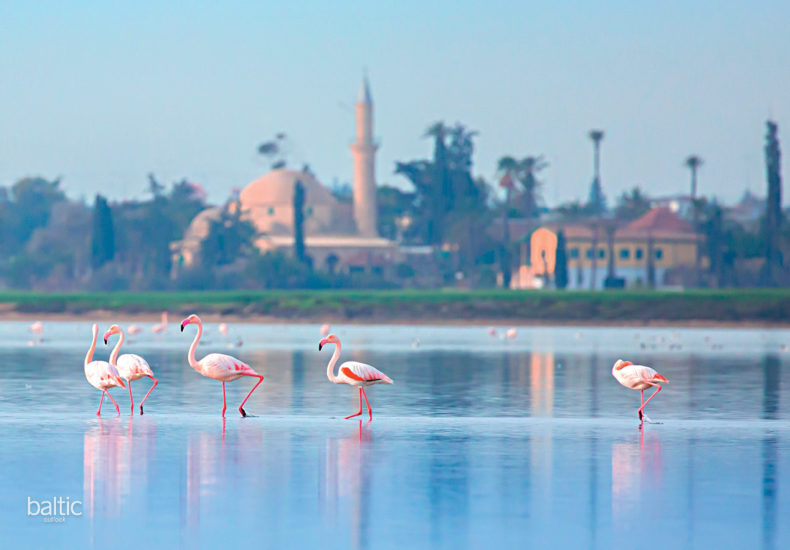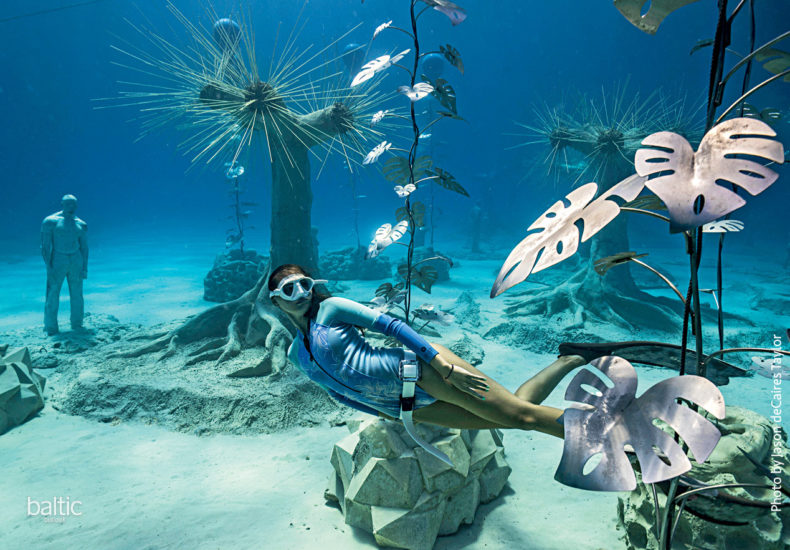As Europe’s sunniest island, Cyprus is ideal for vacations year round. Baltic Outlook writer Olga Dolina headed to this charming Mediterranean island to become acquainted with its more authentic side, which has no lack of ancient traditions, beautiful beaches, or even pink flamingos.
Surrounded by the magnetic waters of the Mediterranean Sea, Cyprus has stood tall and strong on the crossroads of mighty empires, religions, and cultures. The third-largest island in the region, it’s a country that has absorbed elements of Greek, Roman, Byzantine, Ottoman, Venetian, and British culture over the course of its eclectic and rich history, yet remains cosmopolitan and ready to embrace the new multicultural world. On the other side of the coin, Cyprus passionately sticks to the land and its roots, ready to share its rural authenticity and charm with every pilgrim who reaches it. Dotted with antique treasures, medieval castles, Orthodox monasteries, secluded mountain villages, and lush marvels of nature, including captivating beaches, Cyprus presents romantic and easygoing flair no matter where the road leads you.
Spring is in the air

I get my first impression of the green coastline from the airplane window. As I find out later, this is a favourite time of year for many locals due to the lush greenery; the rest of the time, Cyprus is dry and straw-coloured. My trip takes place in January, a rollercoaster month when nature is free to play out any card she desires, from a perfect and sunny 19°C to harsh winds and showers, which I experience in full swing. Cyprus is indeed a year-round island. With folded sun loungers, travelling off-season in the Mediterranean often carries a mood of meditative pensiveness. So it helps to unfold the real character of the destination and its inhabitants.
When I arrive in Larnaca, I at once notice the crisp, light, citrusy sweet air and take a deep breath. It’s the season for tangerines, clementines, and lemons. The trees grow slightly chaotically amid the city’s dense white-walled jungle of residential buildings and shopping areas. Most of the fruits remain untouched at the tops of the trees, and the overripe ones fall to the ground.
A few days later, when I join a wine tour led by a charming woman named Helena, who focuses on small tours featuring rural character and happily shares stories of her homeland, I experience another magical side of this island. Our road to discover the wines of Cyprus takes us through postcard-like villages and the scenic pine- and cypress-filled foothills of the Troodos Mountains, which are crowned by the 1952-metre-high Mount Olympos. In spring, the almond trees here are the first to blossom, and in February the roads to these villages are dressed in heavenly shades of white and pink. There are countless olive and carob trees as well. Carob turns out to be another Cypriot treasure, often used in syrups as a healthy substitute for chocolate. Every seed of the carob fruit, regardless if the tree grows in Cyprus or elsewhere in the Mediterranean, weighs exactly the same. So in ancient times the seeds were used as a measure of weight for various goods, including silver and gold – which is where the word ‘carat’ comes from.
Turquoise waters and flamingos

Cyprus has more than fifty Blue Flag beaches. The Ayia Napa and Protaras area in the east abounds with turquoise waters. And there’s more to discover at the end of the peninsula with Cape Greco and its sea caves and national park. A web of breathtaking nature trails for every level of hiker and cyclist traverses the landscape, which features fragrant pines and coastal cliffs overlooking relaxing beaches.

The scenic limestone cliffs at Cape Greco attract daredevil cliff-jumpers, while the numerous caves along the coastline are tailor-made for snorkellers. Speaking of which, the most recent and rather extraordinary newcomer to both the snorkelling and museum scene is the Museum of Underwater Sculpture Ayia Napa. Celebrating the power of nature, this magical underwater world created by eco-artist Jason deCaires Taylor sits in transparent waters at a depth of eight metres and 170 metres from the shore. The underwater ‘forest’ here consists of 93 works of art, both figurative (people and trees) and abstract, with some pieces floating just beneath the surface of the water. Made of pH-neutral materials, the sculptures will eventually create a habitat for a variety of marine flora and fauna. So if you come back years from now, this underwater kingdom will already look different.

Still another inspiring feature can be seen right next to the Larnaca airport. The road to the city centre lies near the massive Larnaca Salt Lake, the winter home of beautiful pink flamingos that gather here in big flocks before their final departure for Africa. A long, specially equipped nature trail lets me observe the birds and the site in comfort. I manage to find a few small groups of flamingos quietly resting in the water; more of them will appear from February to April. Hala Sultan Tekke, a mosque and pilgrimage site of global importance, enhances the grandeur of the serene landscape here. Its sharp minarets peek through the tall cypress trees and palms to reflect in the shimmering waters of the iconic lake.
Indulge in coffee like a local

It’s in Nicosia that I discover the essence of Cypriot café and coffee culture. Just like in any town or village in Cyprus, the most charming images of authentic daily life here are the little groups of silver-headed men who sit in the kafenes, sipping their coffee, playing backgammon, and discussing the news or passers-by. These cafés are an essential social phenomenon and play a crucial role in everyday life on the island. Traditionally, however, they were open only to men. And still today, men come here in the mornings and evenings to sit for hours, especially the retired ones, while their wives tend to household chores and watch over the grandchildren. The gender line might be not that strict anymore nowadays, but I nevertheless hardly see any women in the kafenes.
Traditional Cypriot coffee is brewed in small copper pots. Sugar is always added while brewing, and the coffee is served with a glass of cold water. You can ask for sketo (no sugar), metrio (one spoon), or gliko (very sweet). And, speaking of copper, Cyprus had a massive copper production industry in antiquity. Consider the similarity between the name of the island in Greek (Kúpros) and the word for ‘copper’. Now all that is left of the once massive mining industry are some quirky artisan workshops offering a variety of copper products for sale.
If I were having coffee at someone’s house, an elderly woman would probably have turned my cup upside down on a saucer and read my fortune by analysing the patterns left by the coffee grounds after I had finished the coffee itself. As it is, I have a metrio coffee and a divine piece of galaktoboureko cake (semolina custard baked in crispy filo dough) in one of the oldest cafés in town on picturesque Faneromeni Square.
Read more about Cyprus in Baltic Outlook.